With over 30 years of experience in visual effects, Jeff Sutherland joined the ranks of ILM in 1999, contributing to many shows such as Jurassic World, Deepwater Horizon, A Quiet Place, and The Mandalorian.
A few days ago, Simone Coco explained ILM’s work on the film Napoleon. Now he’s back to talk about his work on Mission: Impossible – Dead Reckoning Part One. He is nominated for an Oscar for Visual Effects for both films.
How was the collaboration with Director Christopher McQuarrie?
(Jeff): Chris was very involved in the visual effects work on Dead Reckoning. He has a sharp eye and really good instincts about where the audience is focusing their attention at any moment. And his very close relationship with and trust in his longtime editor, Eddie Hamilton, and client-side VFX supervisor, Alex Wuttke (also from ILM), were also big features of our collaboration. All three of them were almost always present in our director reviews, and ideas and opinions were bounced around freely. It was a great creative atmosphere.
(Simone): Collaborating with the Director Christopher McQuarrie was a fantastic experience; his expertise in crafting action movies, refined over years of collaboration with Tom Cruise, resulted in the creation of something truly exhilarating. His ability to instinctively discern the desired outcome for each shot streamlined the process, ensuring feedback was concise and clear, without any unnecessary time spent.
What was his approach regarding the visual effects?
(Jeff): Christopher McQuarrie wants to get as much in-camera as is practically possible. This actually really helps the visual effects work because so much of the physics of a shot has a strong foundation in the photography. Even for shots that might be more reliant on CG, Chris acts as a sort of gravitational pull to keep things grounded in reality.
(Simone): His approach to visual effects involved maximizing realism by consistently referencing authentic photography. Recognizing the significance of VFX in storytelling, he ensured that it seamlessly integrated with the narrative, avoiding any distractions for the audience.
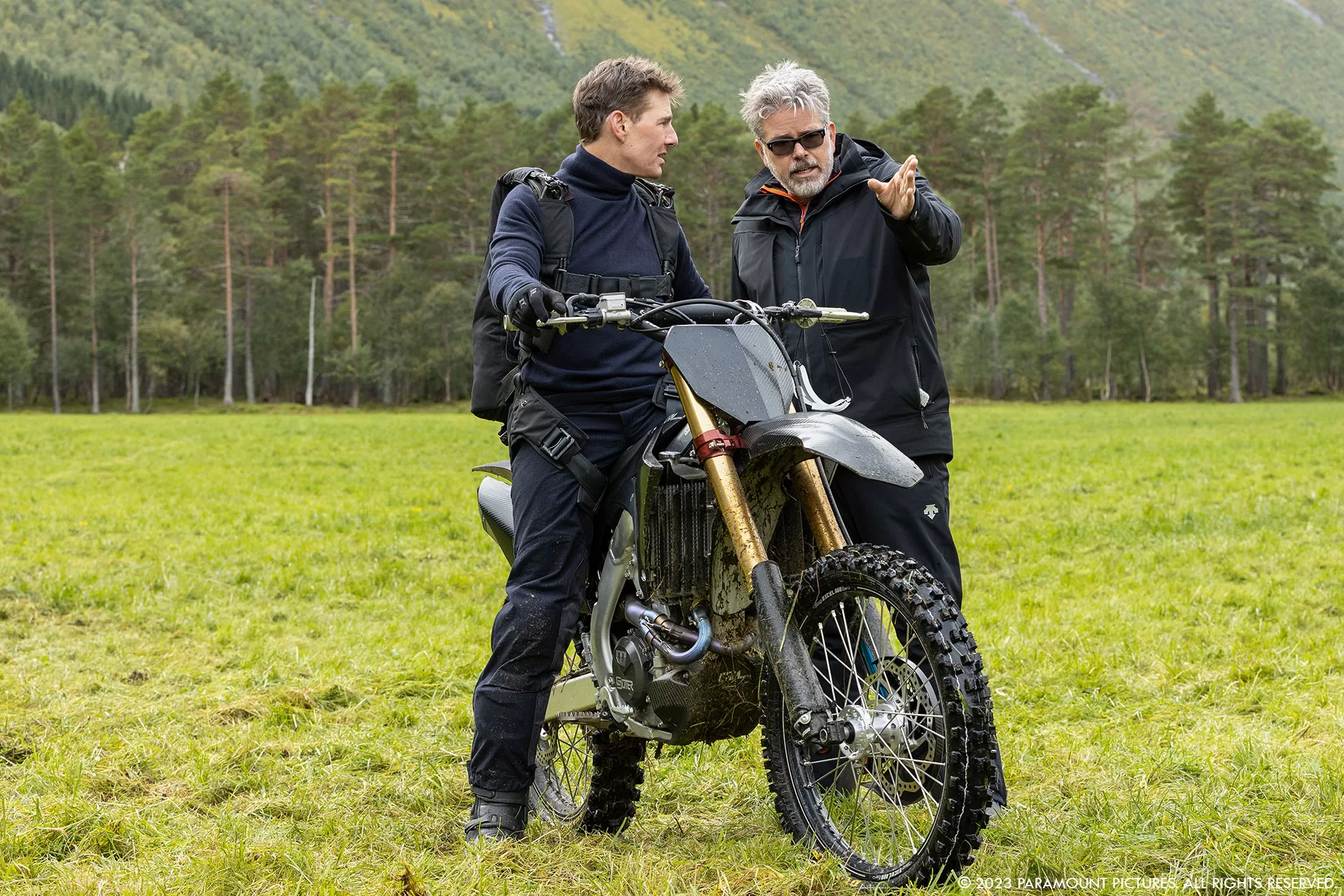
Like every Mission Impossible movie, we are traveling a lot. Can you elaborate on the environments and set-extension work?
(Jeff): All the major sequences in the film started with location photography, whether it was the streets of Rome or a Norwegian valley standing in for the Alps. But, because of Covid-related production delays and a long shoot schedule, photography was extended across many months and therefore crossed many seasons. Some of the major environment work for the Orient Express train sequence involved recreating the shots to match seasons from beat to beat in the cut. And large chunks of that sequence were also filmed later in the UK. So backgrounds were created for those shots to match in with the plates that were shot in Norway. For the Rome chase sequence, it was amazing how much of the city the production was able to lock off for shooting. But there were some landmarks and areas that were off limits and needed to be protected from careening vehicles. The historic Spanish Steps is an example of that. A lot of it was shot at the top and bottom of the steps in Rome. But all of the action that took place on the steps themselves was shot on a UK backlot using a full-scale practical build which represented about 1/3 of the height of the actual steps in Rome. Our visual effects artists provided a full set extension for those shots including the steps themselves and the surrounding buildings.
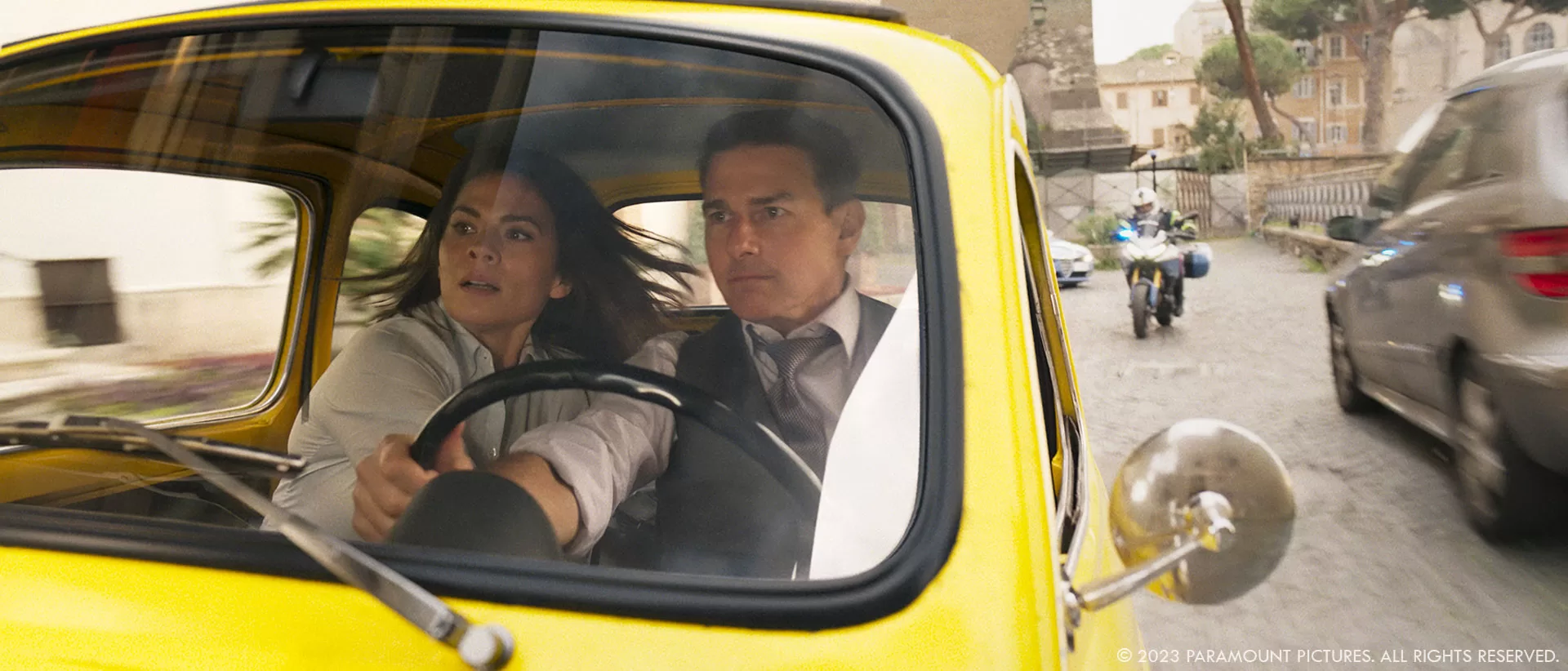
The Rome car chase is really cool. How did you enhance it with cars and crowds?
(Jeff): The Rome car chase was filmed on the locked-off and mostly empty streets of Rome. A typical shot would use real cars for the BMW, the little yellow Fiat 500, the Hummer, and sometimes a few other cars they might need to interact with. We added dozens of CG cars to the sequence to give the feeling of heavy traffic congestion and, at times, to create a number of close calls with the hero vehicles. The large red bus that narrowly avoids the Hummer, and the many cars that the Fiat weaves between would be examples of this. The hero cars in the plates were also often covered with multiple camera and stunt rigs. So we created digital versions of those cars too which were often used in whole or in part to clean up the rigs. A mix of extras and digital crowds were used to populate the shots. Populating the Spanish Steps was particularly tricky as the real location in Rome is always mobbed with tourists, and the action careens down the steps right through the middle of the crowd with lots of wide and close-up camera views. A certain number of extras were in the hero car background plates. But for many shots, our camera moves were reproduced as closely as possible with a motion controlled Technodolly, and actors were shot and composited into the action. We used CG crowds to fill both the midground and backgrounds, as well as to fill out the wide shots.
Can you tell us more about the impressive cliff jump sequence?
(Simone): Alex, our VFX Supervisor, along with the on-set team, meticulously scanned, photogrammetry, and collected references for the entire mountaintop. Their dedication allowed us to seamlessly replace the jump ramp used by Tom Cruise, navigating numerous iterations to precisely define the terrain’s shape and rock coverage. The goal was to ensure a flawless viewing experience as we substituted the constructed ramp with a terrain that harmonized with the surroundings. Additionally, we enhanced the realism by replacing only the suspension and tires of the bike, transforming it into a dynamic element within the natural landscape.
The train sequence is really intense. Can you tell us more about that shoot and especially the train crash?
(Simone): Regarding the train crash the filmmakers opted for authenticity by capturing a specially-built prop train driven off the edge of a cliff at Darlton Quarry in the Peak District village of Stoney Middleton. The locomotive was seamlessly incorporated into all of the final shots, adding a realism and pulse-pounding moment for audiences. In our photographic homage to the iconic Kylling Bridge in Norway, we recreated its surroundings on each plate of the train crash, capturing the essence envisioned by the filmmakers. At the base of the cliff, we add a water simulation, immersing the scene in the dramatic spectacle of a train’s cinematic crash into it.
What were the main challenges with the train sequence?
(Jeff):
The Orient Express train sequence had a lot of huge challenges since the action takes place on top of, inside, underneath and even through the side of the train carriages when Ethan makes his parachute entrance through one of the side windows. The practical SFX crew built a full scale Orient Express locomotive and a couple of replica carriages to shoot with. We built a full ten carriage digital train to extend the train in shots, replace parts of the train, or add it entirely when the practical carriages could not be used. Since the photography was split between the location work in Norway and backlots in the UK, multi-camera array passes were shot from the top and front of the train running through the Norwegian valley to use as backgrounds. While the array footage was used to provide views of the Alpine valley from the interior of the train in some shots, it was much more challenging when stitched backgrounds were needed for the Ethan and Gabriel fight shots done on top of the train where much wider views were necessary with no place to hide seams. And lots of digital environment work was done when the camera positions were neither on nor inside the train to enhance the location photography when needed. Digital trees, foliage, mountains, and a tunnel were added to a number of shots, and a flowing CG river was created for the down angle shots from the crumbling bridge above. And, of course, complex FX simulations were used for the bridge destruction, explosions and the crumbling bridge itself as the train carriages crept toward the edge of the disintegrating bridge and, one by one tumbled over the edge splashing into the river below. Large practical SFX builds of sections of the carriages that could be tilted a full 90 degrees were mounted on gimbals and cranes and used to allow the actors to perform the stunts in the shots where the carriages go vertical before detaching and falling into the river below. High detail digital interiors were made for the dining and bar carriages and used to either extend or replace the partial carriage builds, and to remove any safety rigging. FX simulations were done for the swinging curtains and tumbling digital furniture, dishes and debris, and a full destruction sim was done for the grand piano breaking through the bottom of the bar carriage and plunging into the river below.
(Simone): Navigating between the real locations in Norway, alternate settings, and studio shots presented a unique challenge during the filming of the train sequence. The task involved seamlessly integrating shots between each location, from removing safety cables and extending the train with CG carriages to replacing backgrounds and foregrounds, all to ensure a cohesive and harmonious visual narrative that seamlessly blended with the authentic environment of Norway.
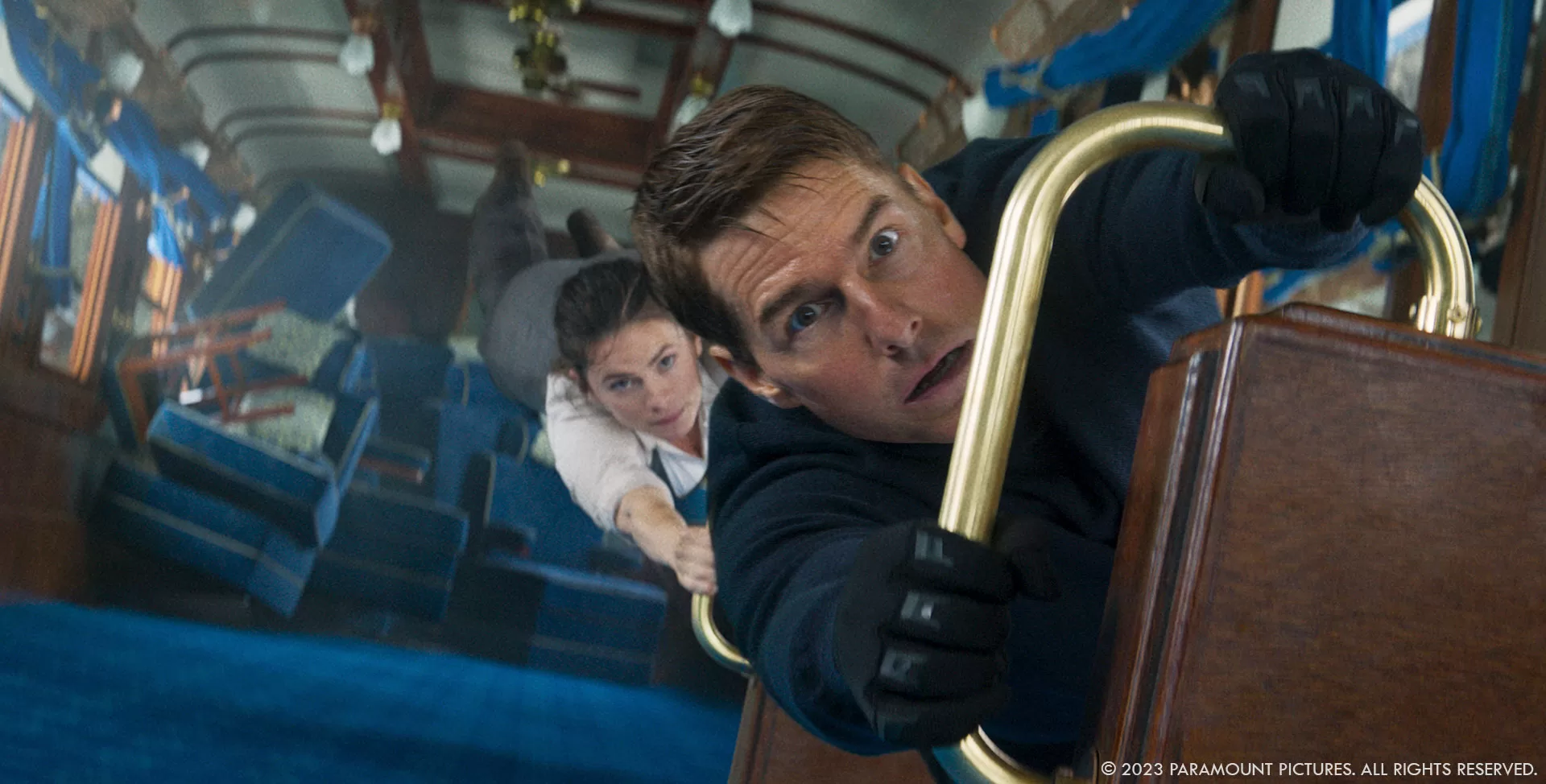
Can you explain the effects for the different face masks?
(Jeff): The face mask shots were fun to do. Each shot was kind of its own puzzle with a bit of a unique approach because it’s not really the same thing happening in each one. The common denominator in them, though, is the careful planning. So the photographed elements provided a solid foundation, and then, honestly, a lot came down to the skill and cleverness of the artists using a pretty wide-ranging bag of tricks and tools. The artists really enjoy working on these and I think that comes through in the final shots. And in this movie we didn’t just have mask pull-off shots to pull off, we also got to do a mask put-on shot when Grace dons the face of the White Widow in Venice. Definitely a fun one!
The movie is full of motion graphics. Can you elaborate about their design and animations?
(Jeff): The motion graphics in this movie were handled by a studio called Blind. They were wonderful!
Which sequence or shot was the most challenging?
(Simone): The cliff jump shot posed the utmost challenge, with Tom Cruise bravely risking his life for the daring stunt. Our paramount focus was ensuring that the shot emphasized Tom’s courageous feat, crafting the scene to prevent any distractions that might draw the audience’s attention away from the gravity and intensity of the breathtaking (and very real) leap.
What is your favorite shot or sequence?
(Jeff): The train chase-then-fight-then-destruction sequence was clearly the most challenging because it was such a big and long part of the movie. So many different things happened while they were on that train, each with its own problems to solve. But a more overlooked sequence that was fun to do was the culmination of the Rome chase that takes place near the Colosseum and ends up down in a Metro tunnel. The way the scene was written, shot and edited was brilliant and had equal parts action, suspense, humor as well as chemistry between the actors. The tunnel environment was a nice blend of set pieces shot on a stage with foreground, midground and background digital extensions. Similarly the Metro collision with the Fiat was a great example of collaboration between SFX and VFX, the genesis of the shot being practical giving the collision a lot of weight and violence, but handing off to digital effects to really make the shots work and look nice. And the timing of everything was so crucial for both the suspense and humor aspects of the sequence.
(Simone): The train crash scene for the movie was an exhilarating challenge, involving the destruction of a bridge and the intense collision of the train at the bottom of the cliff in the water. It is always fun to blow up stuff!
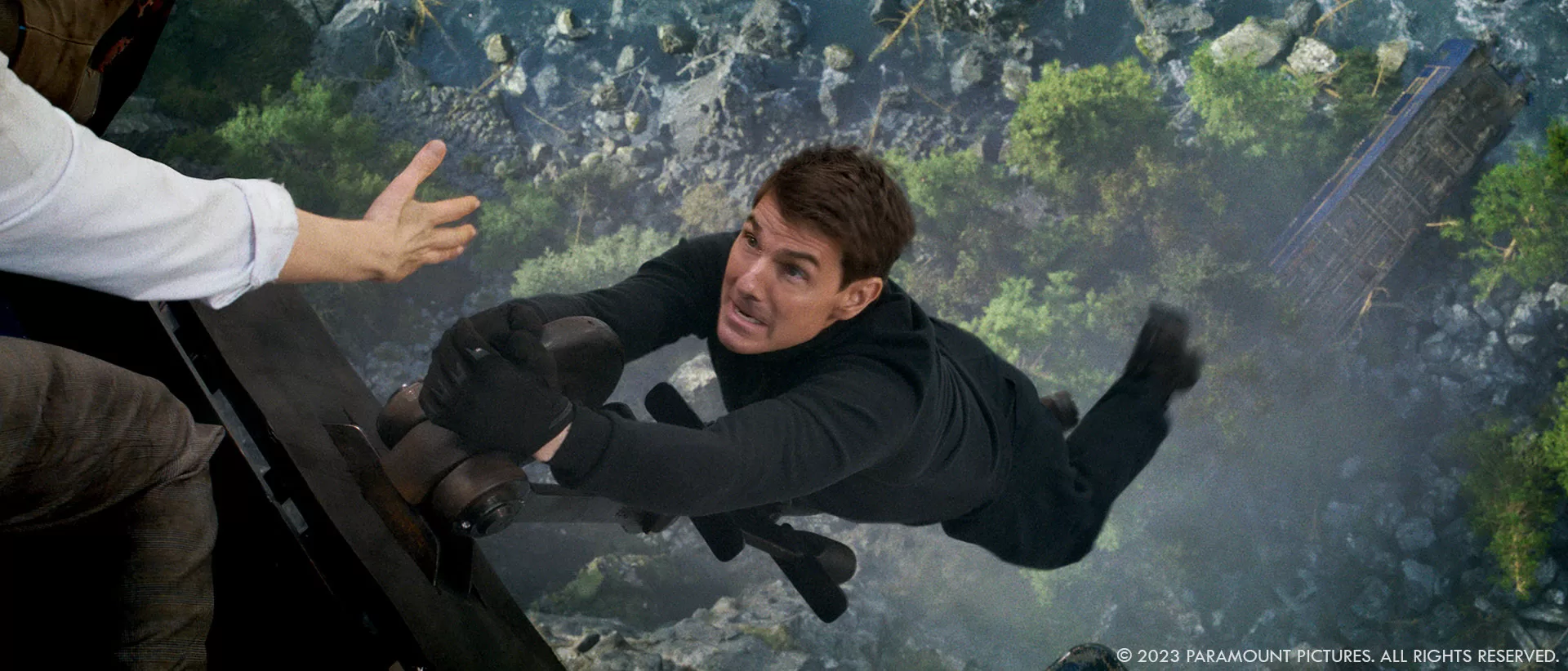
What is your favorite memory on this show?
(Simone): A week on set with Christopher McQuarrie and Tom Cruise. I had the incredible opportunity to witness firsthand the behind-the-scenes magic, gaining insight into the meticulous process and marveling at Tom Cruise’s hands-on approach, especially when performing his own stunts.
(Jeff): So it’s hard to pick a single favorite memory. But I have to say that McQ bringing his dog to the reviews at ILM was a highlight. (Hi, Gypsy!)
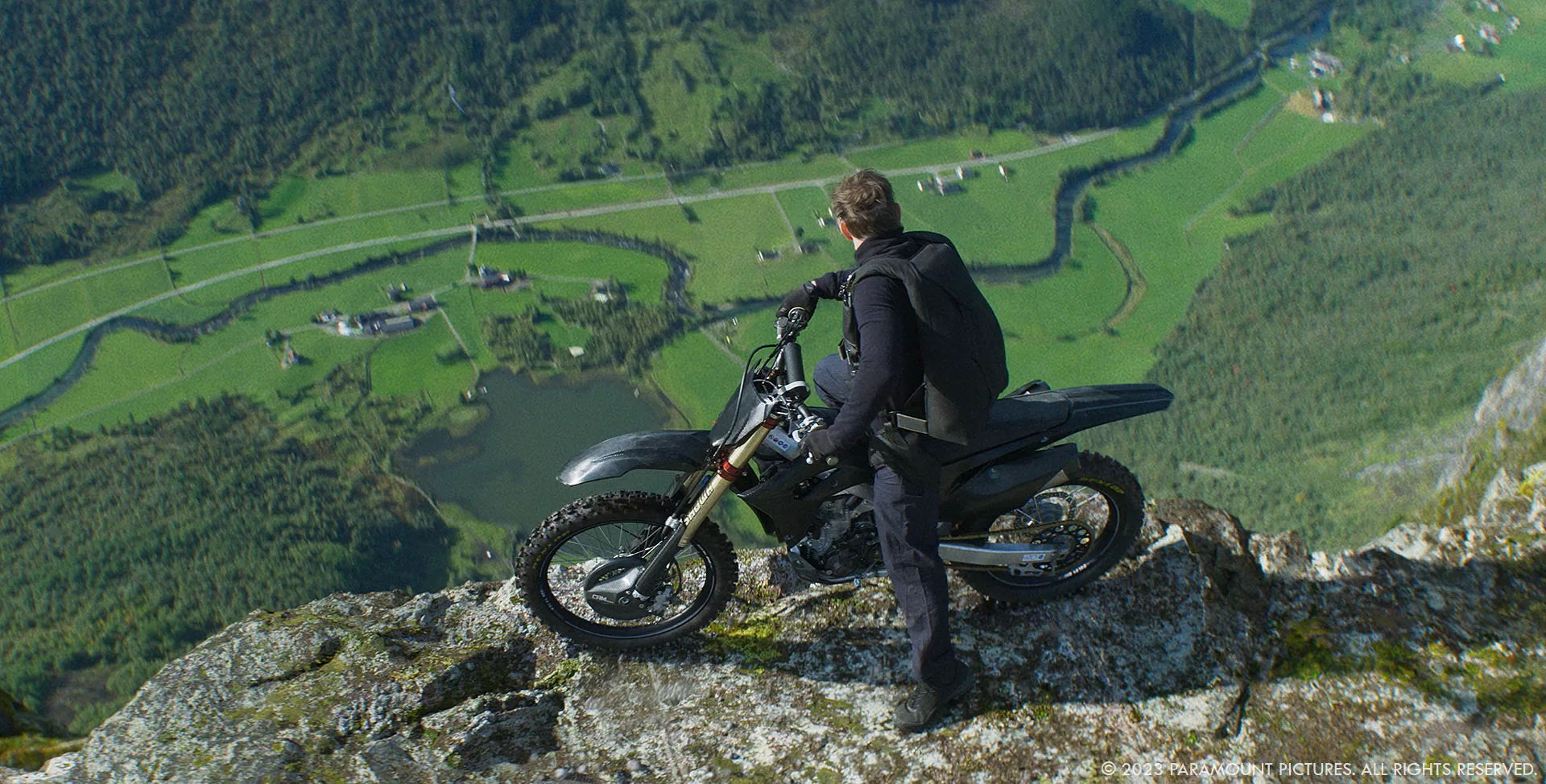
How long have you worked on this show?
(Jeff): With Covid and the various delays, my work on this show spanned the better part of 3 years.
(Simone): I worked approximately two years on the show, including a six-month hiatus.
What is ILM’s VFX shots count?
(Jeff): 1155 visual effects shots.
A big thanks for your time.
WANT TO KNOW MORE?
ILM: Dedicated page about Mission: Impossible – Dead Reckoning Part One on ILM website.
© Vincent Frei – The Art of VFX – 2024






